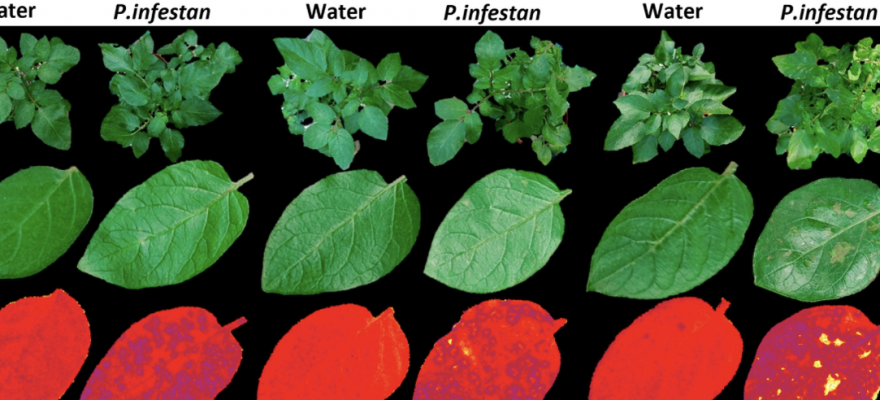It uses genetic engineering and artificial intelligence to detect agricultural damage with an eye towards global food insecurity.
By JNS.org
Researchers at the Hebrew University of Jerusalem have developed a new molecular sensor system that detects harmful diseases in plants and food crops, including potatoes and tomatoes.
Potatoes have become the world’s third major food source. Early detection of late blight disease, which gave rise to the Irish Potato Famine, could help reduce global food insecurity. The disease is a leading cause of potato and tomato crop loss, costing an estimated $6.5 billion in annual damage worldwide.
In a cover story published in The Plant Journal, researchers used genetic engineering methods to produce new potato varieties that produce distinctive proteins. These proteins act as a biological sensor that can be sent to the chloroplasts in the plant’s cells, where photosynthesis occurs.
“In its early stages, it is difficult to identify the disease since you can’t see external signs on the leaf,” says Hebrew University doctoral student Matanel Hipsch, who led the study.
By using sensitive cameras that can pick up signals sent from the sensor, they were able to obtain spatial information about the whole plant. The images helped monitor the plant’s physiological state throughout the development of late blight in the potato.
Hipsch conducted the study under the supervision of Shilo Rosenwasser of Hebrew University’s Robert H. Smith Institute of Plant Sciences and Genetics in Agriculture. They collaborated with David Helman from the university’s Department of Soil and Water Sciences, who developed an artificial intelligence-based algorithm capable of analyzing the fluorescent images, distinguishing between healthy and infected leaves.
The research also revealed that the protein detected diseased areas of the leaves even during the first invisible stages. Another finding suggests that areas infected with late blight are characterized by higher photosynthetic activity compared to the rest of the leaf. This indicates how the pathogen maintains and even improves leaf productivity in the early stages of the disease to “disguise” its development in the plant, according to the researchers.
“The development of advanced biotechnological tools for early plant-disease detection can lead to a future research breakthrough in understanding the pathogenicity process and minimize agricultural damage,” says Rosenwasser.
Hebrew University researchers Nardy Lampl and Omer Sapir of the Institute of Plant Sciences, Yaron Michaeli of the Advanced Institute for Environmental Sciences at the Faculty of Agriculture and Professor Yigal Cohen from the Goodman Faculty of Life Sciences at Bar-Ilan University also participated in the study.
This research was supported by the Israel Science Foundation (No. 827/17) and ICA in Israel foundation.
